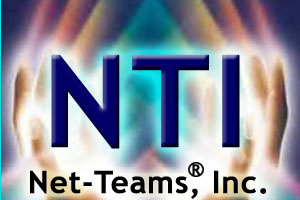 |

Wakan Cangleska: (Sacred Hoop) Sweat Lodge & The Ghost Dance Part 2 |
 | 5 |
|
|
Submitted by Zach Adler
| RSS Feed
| Add Comment
| Bookmark Me!
The Medicine Hoop symbolizes many things but among the most important are the four cardinal directions, North, East, South, West which are directly linked to the four colors associated with them, the four races of man, White, Red, Yellow, Black, the four seasons Winter, Spring, Summer and Fall/ Autumn, the four elements Wind, Earth, Fire and Water and the four stages of life, infant, youth, adult, and elder. All of which varies between Nations. For the Lakota, North is white, winter, “with its cold and mighty winds giving strength and endurance” (Neihardt 194). East is yellow, Spring “which gives peace and light” (Ibid). South is red, Summer, “which gives warmth” (Ibid). West is black, Fall/ Autumn, “which gives rain” (Ibid). Due to their relative closeness geographically, among many other aspects that they share, the Assiniboine attribute the same characteristics to the Medicine Hoop, give or take the symbolism, since the Lakota were a more warrior based clan than the Assiniboine. My uncle claims, “North represents the mind, East represents emotions, South represents the heart, and West represents the earth, and all of these are the aspects of all life.”
To expand on the four stages of life, birth, childhood, adulthood, old age, second childhood, death, and how it relates to the circle, we have to address the sweat lodge as well. In the words of my uncle:
“A sweat lodge is a physical manifestation of mother earth, and symbolizes the womb, which is round. The lodge itself is usually made out of twenty-eight willows which represent the twenty-eight days of the menstrual cycle. The fire pit is round, and fire represents the spark of life. The pit is a circle, and is usually in the center, or front left or front right. Pueblo people have it on the side. Each round represents an aspect of life. The first round is birth or youth, where you pray for yourself, and physically show selfishness like most people do when they’re young. The second round is childhood or adolescence, where you’ve grown up a little and aren’t as selfish so you pray for others. The third round is adulthood where you pray for both yourself and others. The fourth round, we call the ‘grandfather and grandmother’ or wisdom round, old age, where you go back and pray for things you forgot to pray for in the first three rounds, as well as pray for things that will help others and say thank you.”
Now it all culminates in the various dances, all of which are performed in a circle around a fire or pole. The Ghost Dance, according to my uncle, “was in a large circle, around a fire, with everybody dancing and spinning left and right to induce a mental trance of sorts. It was originally performed by Wovoka who was Paiute in order to bring back the connection to the ancients. Later, the Lakota decided to adopt it into their warrior society as a way to become invincible to bullets, just like a ghost.” A more detailed description comes from WOVOKA And The Ghost Dance. “One additional description of the 1890 Ghost Dance ceremony in Nevada can be cited. Yerrington Alice Guild, in the 1950’s provided Robert Davidson (1952:16) with this following account: In the middle of the circle of dancers was a central bonfire which gave off a great deal of heat and light. Around the circle moved the Indians hand in hand in a sort of shuffling side step. They kept chanting something to the beat of skin drums. Some members would fall out of the circle onto the ground in a trance-like state, and some, upon falling, kept wiggling” (Hittman 92 – 93). The circle is physically manifested by the people involved in the dance but the reason for performing the dance is spiritual. The Round Dance is fundamentally similar to the Ghost Dance but physically different.
“It is a big dance, it is to pray for good crops and to ask for game… Fires were built on the outside of the dance circle. A pole was erected within the center of the dance ground. It served as a point of orientation for the circle of dancers… and had no symbolic or cosmological significance. Men and woman comprised the dance circles. Joining hands, their palms pressed together and their fingers interlaced, participants would circle the pole in a clockwise direction” (Hittman 93 – 94).
Everything an Indian does is in a circle. Truer words were never spoken. The idea or concept of the circle or the “sacred” hoop is somewhat abstract and ambiguous, yet so intrinsically connected to the Native American psyche and way of life, be it specific physical manifestations like the teepees and the dances, or more spiritual and representational like the medicine hoop.
|
|
 |

|
|
LinkedIn Recommendation:
 Steven. Gill - Media and Creative Services at Northrop Grumman Technical Services - Teo's work with his Net-Teams and his ability to maximize the rankings and visibility of websites is amazing, His development of iTV is particularly notable. March 16, 2012, Steven. - worked directly with Teo at Net-Teams, Inc. Steven. Gill - Media and Creative Services at Northrop Grumman Technical Services - Teo's work with his Net-Teams and his ability to maximize the rankings and visibility of websites is amazing, His development of iTV is particularly notable. March 16, 2012, Steven. - worked directly with Teo at Net-Teams, Inc. |
|
Featured [Native American Indian Circle Sacred Hoop Medicine Wheel Sweat Lodge Spiritual Ghost Dance Wovoka] Articles:
|
 |
